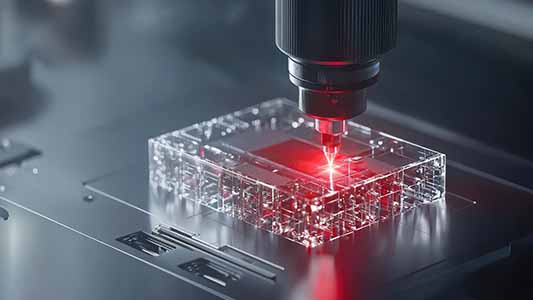In the fast-evolving landscape of modern manufacturing, the convergence of precision Surface Mount Technology (SMT) and Artificial Intelligence (AI) is reshaping smart factories. As industries transition toward Industry 4.0, characterized by automation, data exchange, and intelligent systems, precision SMT must evolve to meet the stringent demands of AI-powered production environments.
The Role of SMT in Smart Factories
Surface Mount Technology is the backbone of electronics manufacturing. It enables the miniaturization and automation of PCB (Printed Circuit Board) assembly, leading to faster production cycles, reduced costs, and increased reliability. In a smart factory context, SMT equipment must do more than just place components—it must integrate seamlessly with other systems, analyze data in real time, and adapt to dynamic requirements.
Smart factories rely on interconnected devices, sensors, and machines to streamline operations. Precision SMT equipment plays a crucial role in this ecosystem by ensuring high-quality placement of tiny components, often at micron-level tolerances, and by facilitating automated inspection, error correction, and feedback loops.
AI and Its Demands on SMT Systems
Artificial Intelligence introduces new capabilities and expectations into the manufacturing process. AI systems require:
- Real-time data for predictive analytics
- High throughput without sacrificing quality
- Minimal downtime and rapid reconfiguration
- Interoperability between machines and systems
To meet these demands, SMT equipment must become smarter and more adaptable. The integration of machine vision, AI algorithms, and IoT sensors into SMT lines allows manufacturers to identify defects, predict failures, and optimize placement strategies in real-time.
Key Areas Where SMT Must Evolve
1. Machine Learning-Driven Quality Control
AI-powered visual inspection systems are revolutionizing quality assurance in SMT. Traditional AOI (Automated Optical Inspection) systems rely on rule-based methods, which can be rigid and error-prone. Machine learning models, trained on thousands of images, can more accurately detect subtle defects such as tombstoning, misalignment, or solder bridging. Precision SMT lines must incorporate these advanced systems to ensure consistent quality.
2. Adaptive Process Control
Smart factories demand flexibility. AI systems can analyze process data and recommend adjustments to parameters such as solder paste volume, placement force, or reflow temperature. SMT machines must respond to these inputs dynamically, making adjustments on-the-fly to accommodate different product types or materials without halting production.
3. Closed-Loop Feedback Systems
Precision SMT equipment must function within a closed-loop feedback ecosystem where data from post-assembly inspection is fed back into the system to correct placement or process deviations. This ensures continuous improvement and helps the AI systems refine their predictive capabilities.
4. Data Integration and Interoperability
AI thrives on data. SMT systems must be designed to integrate with factory-wide MES (Manufacturing Execution Systems), ERP (Enterprise Resource Planning), and cloud platforms. This integration enables comprehensive visibility into production status, component traceability, and root cause analysis.
5. Predictive Maintenance
One of AI’s most impactful applications in smart factories is predictive maintenance. Precision SMT equipment equipped with sensors can monitor parameters like motor vibration, temperature, and component wear. AI models analyze this data to predict potential failures before they occur, thus minimizing downtime and extending equipment lifespan.
The Future: SMT as an Intelligent Partner
To fully realize the potential of AI in smart factories, SMT must shift from being a passive assembly tool to an active partner in intelligent manufacturing. This means:
- Embedding AI chips directly into SMT controllers for real-time decision-making
- Supporting digital twin technologies to simulate and optimize production runs virtually
- Leveraging edge computing to process large volumes of data locally, reducing latency and dependency on central systems
Moreover, SMT design must become modular, allowing quick integration of new capabilities and easy upgrades as AI technologies advance.
Conclusion
The synergy between precision SMT and AI is foundational to the smart factories of tomorrow. As AI continues to drive demands for flexibility, speed, and intelligence in manufacturing, SMT equipment must not only keep pace but anticipate needs. By embedding intelligence, enhancing connectivity, and enabling adaptive control, precision SMT becomes a vital enabler of AI-driven manufacturing excellence.
In the coming years, the manufacturers who can successfully align their SMT processes with AI technologies will lead the way in delivering higher quality, faster time-to-market, and more sustainable production outcomes.
–—–
References:
- https://www.ibm.com/watson-iot
- https://doi.org/10.1016/j.mfglet.2014.12.001
- https://www.ipc.org
- https://www.kohyoung.com
- Several other web pages are also referred to.
–——
About the author : I am B. E. in Industrial Production and served as lecturer in three different polytechnics for 10 years. I am also a freelance writer and cartoonist.












